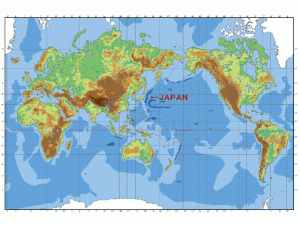Below is an interesting article by Dan Slater of Finance Asia in response to Japan’s Open Future (the book I have written with Tomas Casas i Klett and Jean-Pierre Lehmann, as introduced in an earlier post). I am reprinting Dan’s article here with his kind permission; it has been picked up on a couple of other sites as well.
And thanks to Elissa Bogos for allowing me to reproduce one of her wonderful photos here! John
By Dan Slater | 7 April 2009
A new book raises the grim possibility China could ‘turn inwards’ and end up like Japan.
China’s decision not to allow Coca Cola to buy local soft drinks champion Huiyuan Juice, announced on March 18, and the latest World Bank report predicting growth will slow to 6.5% from the previously forecast 7.5%, has caused some commentators to wonder whether China could turn inwards. The fear is that China could turn away from its relatively open economic model and copy Japan’s ‘mercantilist’ model, defined as manipulating the terms of trade in one’s favour through currency depreciation and non-tariff barriers to imports and investments, and thus ‘stealing’ growth from one’s neighbours.
Japan has a total trade-to-GDP ratio of just 18%, and the stock of foreign direct investment represents a truly lamentable 1%. With only 2 million registered foreigners, Japan is the least welcoming country in the Organisation of Economic Cooperation and Development (OECD), with a ratio of 1.5% foreigners to the total population. Compare that to 10% in Spain, or even Germany, which has 16 million foreign residents in a population of 85 million.
China is far more open, with FDI accounting for 4% of GDP and 10% of capital formation in 2008. Total trade accounts for 35% of GDP. Foreign firms exporting out of China account for almost 50% of total exports — probably a unique ratio in world history. China also has huge imports, meaning the net contribution of trade to GDP is much smaller. But China is clearly an important cog in the global production chain. Japan, despite its well-known brands, is not. Indeed, Toyota pretty much sums up the significance of Japanese exports. (Cars are Japan’s most important export component, and within that, Toyota is the most important company.)
Tomas Casas i Klett, co-author of the excellent new book Japan’s Open Future warns: “The world can digest one mercantilist super economy, but not two.” This comment refers to what Casas i Klett believes is the defining characteristic of Japanese economic history, namely the accumulation of trade surpluses with the rest of the world. His concern is that in a time of crisis, China could follow Japan’s lead in turning away from mutually enhancing growth, as Japan did in the 1930s and surprisingly, even today, as reflected in the figures above. The effect would be a series of ‘beggar thy neighbour’ policies through currency depreciations and protectionist methods which could plunge the world into depression, according to one widely held theory.
China already looks somewhat like Japan in its pomp. Just as Japan went through a manically energetic episode after the Second World War, during which people united behind the goal of ‘catching up with the West’, China in the 1980s turned its back on the ideological rigidities of Maoism. Just as Japan did earlier, China has flourished by creating an enormous amount of manufacturing capacity in order to export to the West. But the pupil has surpassed the master: China’s ratio of trade to GDP is 35%, two times that in Japan. Japan seems to be going in the other direction, with its share of the world export market falling from 8.25% in the 1990s, to 5.5% today.
Is Japan still mercantilist if its trade activity is diminishing? Yes, but perhaps an increasingly bad example (which is precisely why Casas i Klett urges opening up the economy). Japan still has huge trade surpluses (but the first current account deficit in 13 years came in January 2009), and exports provide what growth the economy manages to eke out. “Fifty-five percent of GDP comes from private consumption, 15% from exports, but when you look at the growth rate of GDP, which is very marginal, that marginal change can be largely explained by a rise in exports. So it’s the change in GDP, not the absolute value of GDP, which is changing,” Kenichiro Kawasaki, a former Japan economist at Lehman Brothers, explained to FinanceAsia last year.
Another similarity is excessively depreciated currencies. Japan has achieved that by extraordinarily low interest rates, while China has achieved it through a target level against the dollar.
The end of the bubble in 1989 brought about conflicting responses in Japan. Under Prime Minister Koizumi, the country made some attempts to switch from the state-directed, mercantilist model of economic growth to a more classically liberal one. But Casas i Klett and his co-authors argue (despite cosmetics reform like the privatisation of certain agencies, especially the Post Office) that this has made little real difference: “Japan (today) is closed by any objective criterion one cares to use: level of imports, inward foreign investment, immigration, foreign managers and professionals, foreign brand recognition, penetration of international media, foreign language capability, international standards, contribution to development, extent of political contests inside Japan etcetera.”
Actually, during the internet bubble of 2000, a crop of ‘new economy’ companies did emerge. What is different to the post-War era, which stimulated entrepreneurial giants like Honda and Sony, is that these companies did not become great world-beaters. On the contrary, the internet sector, as reflected by the mother board of the Tokyo Stock Exchange, has never recovered from Takefumi Horie’s Livedoor scandal.
The question now is whether China will react in the same way as Japan to an economic catastrophe — and let us be clear that this does not necessarily imply evil or stupidity. The lesson of the 1930s (as could be repeated today) seemed to be that liberal economies simply did not work, especially when only the Soviet Union and Nazi Germany seemed to have found an economic solution. Recall that pre-war Japan was run in the orthodox liberal manner — at least until 1931 when the country was forced off the gold standard along with Britain. After 1931, in a bid to solve the banking crises and wealth inequalities that had followed World War I, Japan adopted very illiberal policies. The results were initially good: Japan saw trade growing at a faster rate than GDP in the 1930s. The big difference versus Japan in the post-war era was that these policies did not result in yearly trade surpluses, because of the military’s import needs. The state took on even more power in 1938 with a series of laws controlling trade and capital. By then, the country was run on purely ideological (Fascist) lines, rather than purely economic (mercantilist) lines.
Experience teaches us that realistically speaking, it’s impossible to maintain a ‘business as usual’ approach in times of economic crisis, however desirable in principle. Brokerage CLSA has published figures which predict a huge shrinkage in world trade. Unless GDP shrinks to the same extent (a disaster in itself) it’s impossible to see China, or any trading country, maintaining its openness in terms of trade-to-GDP ratios.
CLSA’s China economist, Andy Rothman, is more bullish than most on China, but apparently only if assuming China becomes less open. Rothman claims that China is far more of a continental economy than generally appreciated, given its low net exports (under 10% of GDP). Thanks to its control of the state banks, the government can force spending to rise on real estate and construction, a sector which is greater than 10% of GDP, and can therefore balance out a collapse in net exports. So problem solved? Kawasaki, quoted above, would not agree. But it would show that China has the ability to crush the vested interest in the export sector for the good of the overall economy. Crushing vested interests in its domestic economy is exactly what Japan has failed to do.
Theoretically, even a successful domestic re-orientation would not prevent an international reduction in living standards, since countries would depart from the theory of comparative advantage. In practice, that theory has been partly discredited, since industrialised countries trade mostly with each other (for example Renault has 10% of the German car market). But new compensating domestic demand must be found — and here Japan and China are both challenged: Japan by terrible demographics, and in China, by a lack of widespread wealth. In this crisis, there are no easy answers.
© Haymarket Media Limited. All rights reserved.









